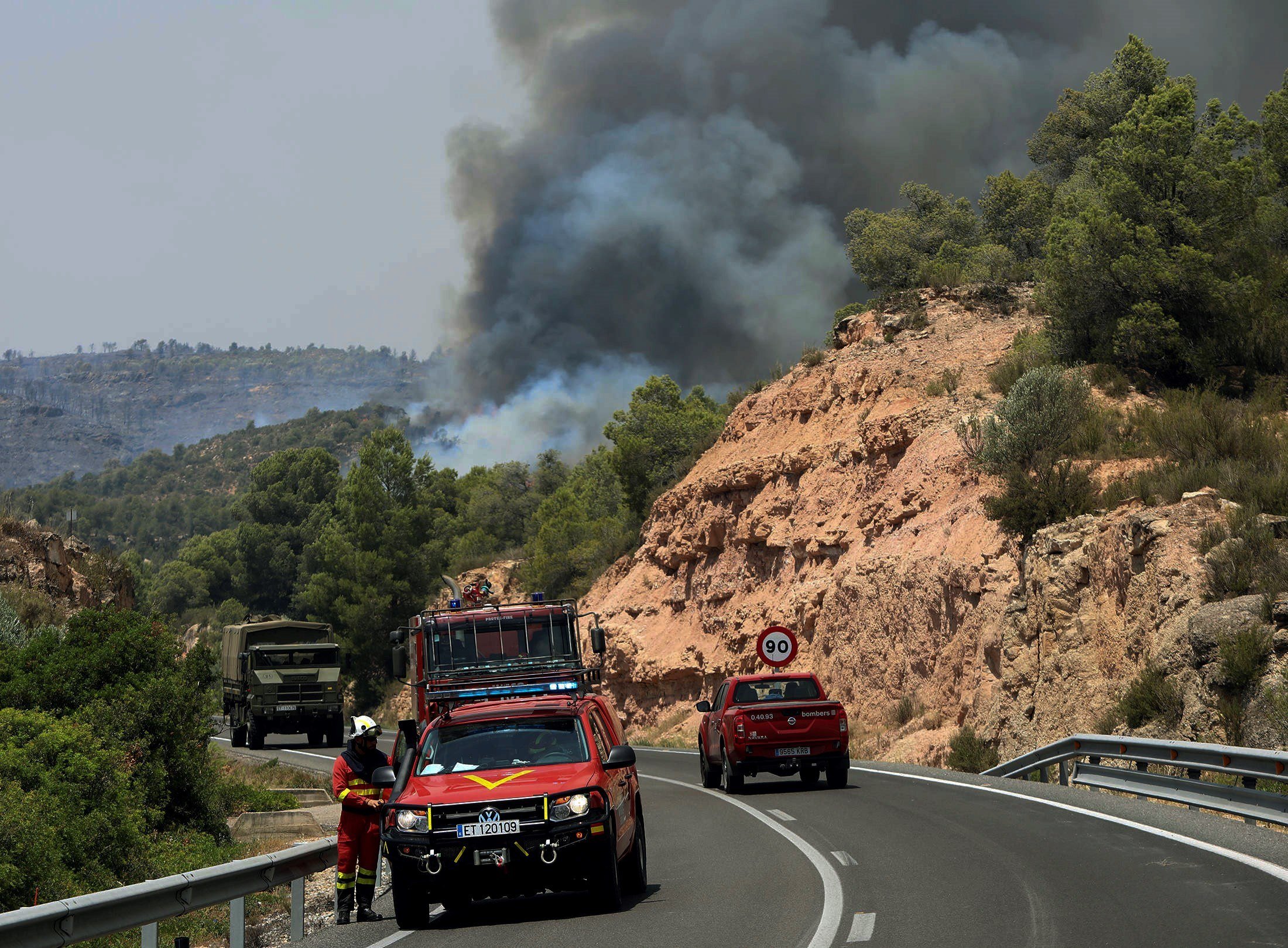Catalonia is facing one of its largest fires in years, in Tarragona province in the south. As of 7:30pm local time this Thursday, the latest statement from the fire service says that 6,500 hectares (25 square miles) have been affected so far. This comes amid the heat wave affecting much of western and central Europe.
The fire was declared yesterday, Wednesday, near the village of La Torre de l'Espanyol. Initial investigations suggest it could have started in the spontaneous combustion of a waste pit attached to a chicken farm. For the moment, thanks to the weather, it has been spreading in a corridor to the north, tending slightly westwards. This means that so far, for example, the nuclear power station at nearby Ascó is out of danger.
With such a large circumference to tackle, emergency services say the fire is currently out of control, with fears it could affect up to 20,000 hectares. That would make it the worst fire in Catalonia since 1998. Whilst such fires occur in Catalonia every year, the last three year had been relatively calm. The biggest fire this century was in Alt Empordà in the north in 2012 and affected 13,000 hectares.
Houses evacuated, roads and forests closed
So far, the fire has been limited to sparsely-populated areas, mainly farms and countryside, and only 53 people have had to evacuate their homes. Residents of other nearby towns, however, have been ordered to stay inside. This goes for Bovera, to the north of the affected region, and those most at risk in Maials, for example the elderly and pregnant women.
Given the risks thanks to the unusually high temperatures, over 40ºC (105ºF) in some areas, the government has banned harvesting anywhere in Catalonia for 48 hours. Similarly, they have closed access to various forests and mountains, including the highly-popular Montserrat, as well as les Gavarres, les Cadiretes, Montsec, Montsant and els Ports de Tortosa-Beseit.
La temperatura arriba a 41,6 ºC a Oliana (Alt Urgell) i volta els 40 ºC a Lleida, Girona, Vic o Tremp. Són condicions insòlites a Catalunya en un dia de juny #meteocat pic.twitter.com/BrDi93M3VT
— Meteocat (@meteocat) 27 de juny de 2019
There are also five stretches of road in the area shut to traffic: the T-714 between Torre de l'Espanyol and Cabacés, the T-2237 between Vinebre and Palma d'Ebre, the T-703 between Palma d'Ebre and the C-233, the C-233 itself between Bovera and Flix, and the C-12 between Maials and Flix.
The response
The Catalan Civil Protection agency has declared an emergency over the situation. Firefighters work through the night to fight the blaze, with support from, among other, the Spanish army. Dozens of teams are working from the ground, with another 15 in the air. The high temperatures, wind and low humidity are all making the task more difficult.
Catalan president Quim Torra and interior minister Miquel Buch have both travelled to the crisis centre in Vinebre. Speaking to the media, Torra said "it's a moment of exceptional climatology and the situation is, and tomorrow will be, critical". Discussing the measures taken elsewhere, like closing the parks, the president said it was due to resources. Namely, that if another such fire were to break out in Catalonia, they'd "have to face a very problematical situation" and would find themselves stretched.
Spanish king Felipe VI, meanwhile, who happens to be in Catalonia today, has met with the Spanish government's delegate to Catalonia, Teresa Cunillera, to be brought up-to-date on developments. Cunillera had previously travelled to Vinebre herself alongside acting Spanish deputy PM Carmen Calvo.

